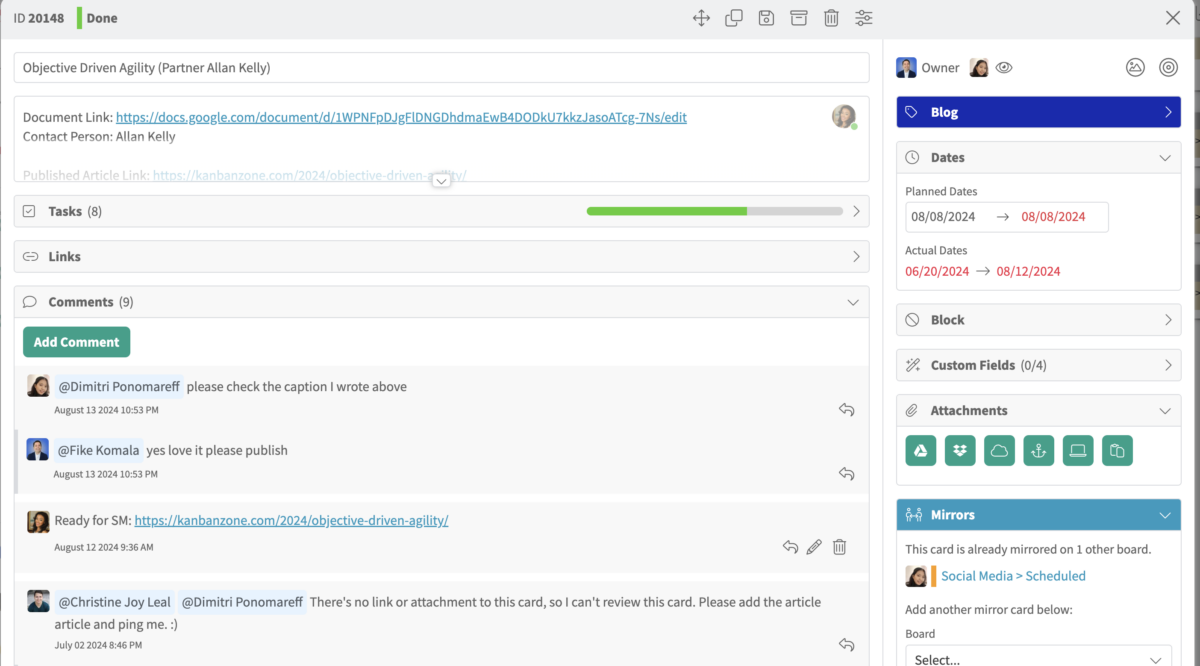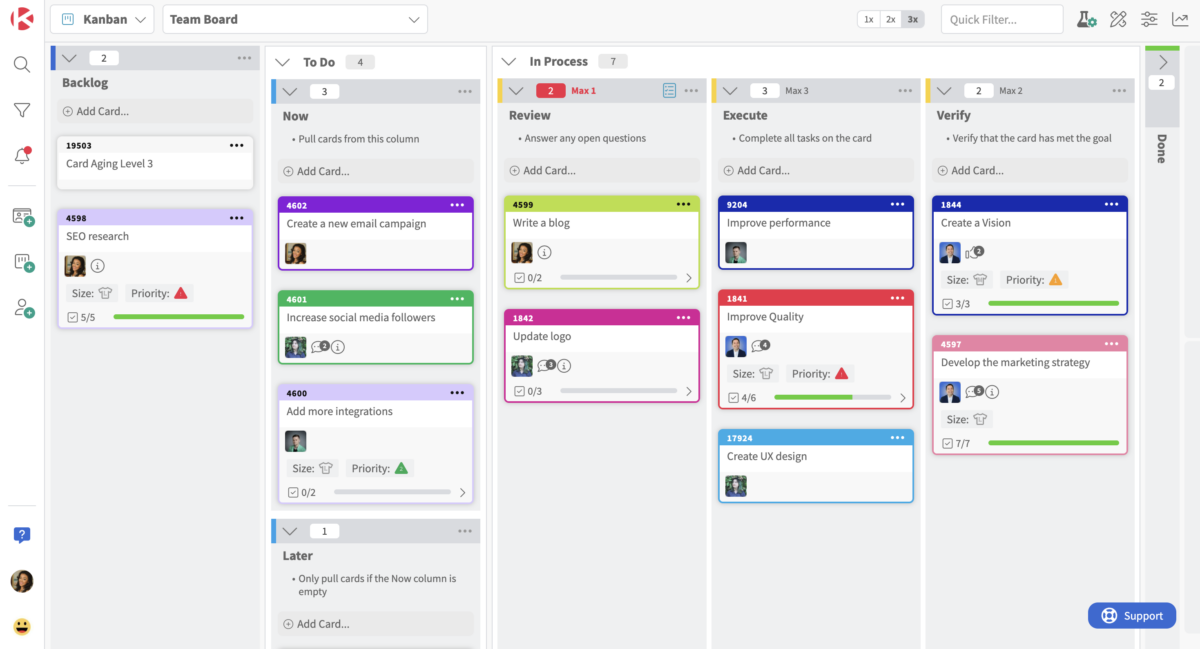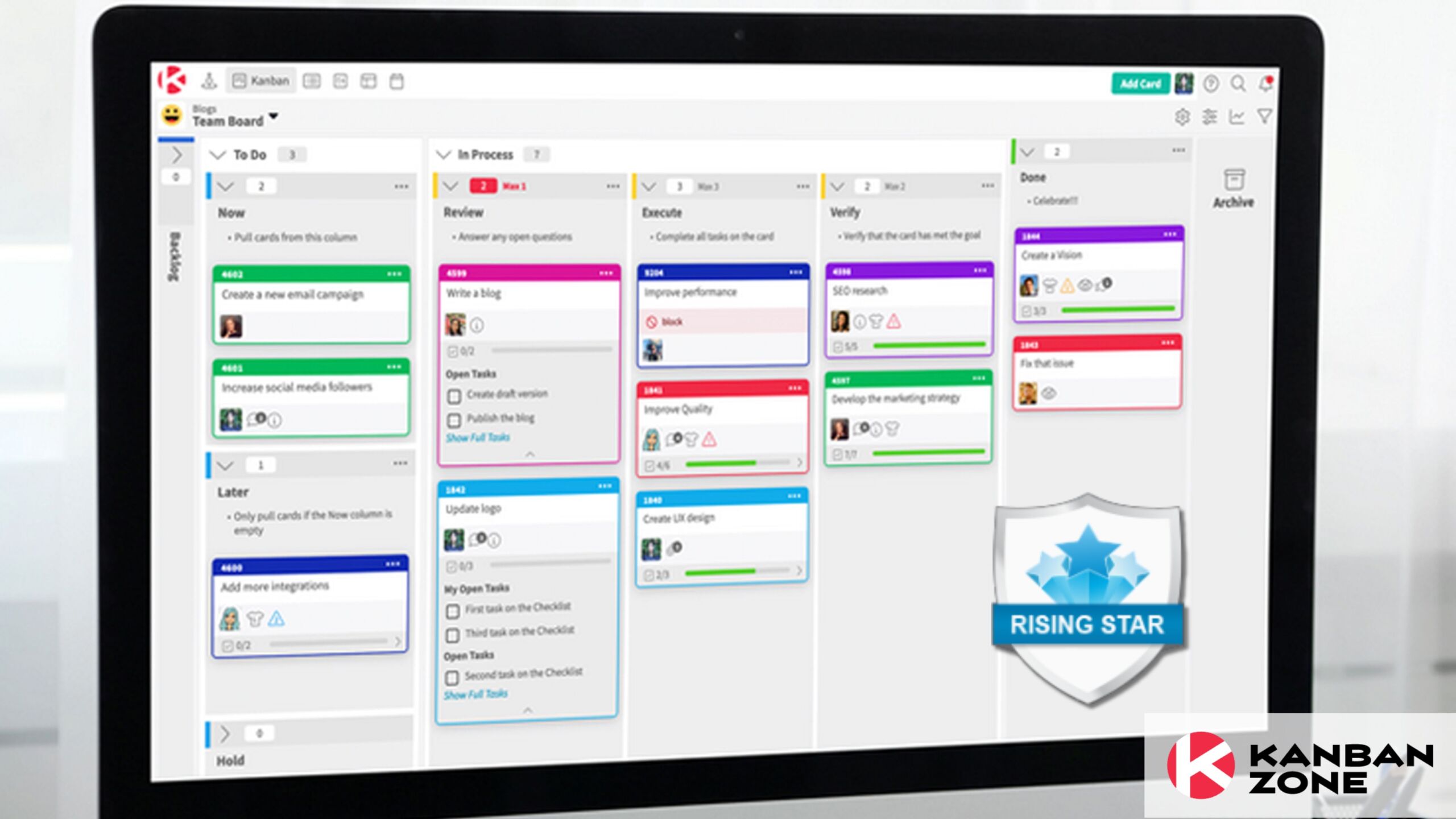
In the complex world of Architectural and Engineering (AE) projects, project management supports the seamless integration of diverse disciplines and the phased nature of project workflows. These inherently multi-disciplinary and multi-phase projects present unique challenges that demand robust and adaptive management strategies. One methodology gaining traction is an iterative Kanban approach, which can enhance outcomes for design teams and clients.
Key Takeaways:
- Architectural and Engineering (AE) projects, due to their multi-disciplinary and multi-phase nature, face challenges related to communication, integration, quality maintenance, and client satisfaction.
- Kanban, a visual project management methodology, can be applied to AE projects to improve efficiency, quality, and client satisfaction. It does this through visual mapping, limiting work in progress, and focusing on workflow.
- Transitioning from traditional methods like Waterfall/GANTT to Kanban can be challenging due to mindset shifts, training needs, and adapting complex workflows.
- Despite these challenges, Kanban offers several advantages for AE projects, including increased transparency, efficiency, quality, and team morale. It is also flexible and scalable, making it suitable for various project sizes.
- Kanban can enhance profitability by reducing cycle times, eliminating waste, and improving resource allocation. It also fosters client satisfaction, repeat business, and adaptability to changes.
- Kanban can empower AE firms to navigate project complexities, improve project execution, and achieve successful outcomes.
In the complex world of Architectural and Engineering (AE) projects, project management supports the seamless integration of diverse disciplines and the phased nature of project workflows. These inherently multi-disciplinary and multi-phase projects present unique challenges that demand robust and adaptive management strategies. One methodology gaining traction is an iterative Kanban approach, which can enhance outcomes for design teams and clients.
Challenges in Managing Multi-Disciplinary and Multi-Phase Projects
Architecture and engineering projects typically involve a range of professionals, including architects, engineers (civil, structural, mechanical, electrical), and environmental consultants. Each discipline brings specialized knowledge and unique language, tools, and perspectives. The challenge lies in ensuring effective communication and integration of these diverse inputs without silos, which can lead to misalignments in project goals and execution.
The lifecycle of these projects—from conceptual design through detailed engineering to construction and post-construction—comprises multiple phases, each with its activities and outputs. Transitioning smoothly between these phases while maintaining a high standard of quality and efficiency is a critical challenge. Projects often face tight deadlines and budget constraints. Balancing the triple constraints of scope, time, and cost without compromising the quality or the project’s structural integrity adds another layer of complexity to project management.
Clients are not just recipients of the final product but active participants throughout the project lifecycle. Managing their expectations, engaging them during key decision-making processes, and ensuring their satisfaction through delivering value-driven outcomes are essential for the project’s success.
Applying Kanban to Architecture and Engineering Projects
Kanban boards visually map out all project process tasks, from initial design to final approval. This visualization aids in understanding the overall project flow and identifies bottlenecks or overlaps where disciplines intersect, facilitating better integration and synchronization of project activities.
By defining and limiting the Work in Progress (WIP), teams can focus on completing tasks before taking on new ones. This improves concentration and efficiency and ensures that each project phase is given the attention it needs to meet or exceed quality standards. Kanban focuses on workflow to ensure that tasks are smoothly transitioned from one stage to the next, which is vital in multi-phase projects. It helps adjust workloads and resources dynamically, reduces downtime and delays, and optimizes project progression.
Kanban’s iterative nature encourages continuous reflection and adaptation of processes based on feedback and performance analysis. This is particularly beneficial in long-term projects, where lessons learned can be applied to enhance future phases of the project. Kanban boards can be shared with clients, giving them a transparent view of the project’s progress. This fosters trust and allows for real-time feedback and adjustments, ensuring client expectations align with project deliverables.

The Challenge of Switching from Waterfall/GANTT to Kanban
Switching from a traditional waterfall or Gantt-based project management approach to a Kanban system for architectural and engineering projects involves several challenges. These challenges stem primarily from differences in project management philosophy, process dynamics, and team adaptation requirements.
Transitioning to Kanban requires a significant shift in mindset for teams accustomed to Waterfall’s sequential, structured approach. The more flexible, continuous flow of work in Kanban can be initially unsettling. Convincing all stakeholders of Kanban’s advantages over traditional methods requires clear communication about its advantages, including improved efficiency and flexibility. Overcoming skepticism can be challenging.
Teams need thorough training in Kanban boards and understanding and internalizing principles such as limiting work in progress (WIP), managing flow, and continuous improvement. Professionals in architecture and engineering are highly skilled in their domains but might not be familiar with agile principles. Training in agile methodologies, often perceived as more suited to software development, needs to be contextualized for the AE work environments.
Architectural and engineering projects often involve complex, interdependent tasks that may initially seem incompatible with Kanban’s emphasis on continuous delivery. Adapting these workflows into smaller, manageable increments while maintaining the integrity of the design process is challenging. Unlike Waterfall/GANTT, where different phases are rigidly defined, Kanban requires more dynamic coordination among various disciplines. This shift can disrupt established communication and approval processes.
One key element of Kanban is limiting work in progress to ensure a smooth flow of tasks. Determining these limits in a multi-project environment like architecture and engineering, where task durations and complexities vary widely, requires careful analysis and continuous adjustment. Finding the right balance between maintaining flexibility in task management and having enough control to ensure project milestones are met is a delicate endeavor. Too strict WIP limits can hinder progress, while too loose limits can lead to chaos.
Choosing the right Kanban tools that integrate seamlessly with existing project management software and databases used in AE projects is crucial. Ensuring these tools support the specific needs of these projects is not always straightforward. Migrating data from traditional Gantt chart tools to Kanban-based software can be complex, particularly when dealing with ongoing projects with extensive historical data.
Continuous improvement, a core principle of Kanban, relies on regular feedback and iterative adjustments. Establishing effective feedback loops in environments with long project cycles and infrequent feedback poses significant challenges. Adapting measurement tools and performance metrics from a milestone-based tracking system to one that emphasizes throughput and cycle times requires performance evaluation criteria and metrics adjustments.
The Benefits of Kanban for Architecture and Engineering
Switching to a Kanban workflow model can significantly benefit architecture and engineering practice. These benefits stem from Kanban’s core principles of visual management, limiting work in progress, maintaining flow, and continuous improvement, all of which can enhance productivity, flexibility, and client satisfaction.
Kanban boards visually represent all current work statuses, enhancing transparency across the project team and stakeholders. This visibility helps quickly identify bottlenecks, pending tasks, and the progress of different project components. The visual nature of Kanban boards helps clients more easily understand project progress and status. This transparency builds trust and facilitates clearer communication about expectations and modifications.
By limiting WIP, Kanban helps ensure team members are not overwhelmed and can focus on completing tasks with higher quality and efficiency. This focus reduces the time tasks spend in limbo and accelerates overall project timelines. Tasks are pulled as capacity allows, which minimizes waste and ensures resources are used efficiently. This can be especially beneficial in engineering projects where resource allocation and timing are critical.
Kanban encourages continuous feedback and iterative work processes, allowing teams to learn from each iteration and incrementally improve the project and process. This can lead to higher-quality outcomes as issues are regularly identified and addressed. Focusing on completing tasks before taking on new ones helps maintain a high level of detail and quality in work, which is crucial in fields like architecture and engineering, where precision is paramount.

With Kanban Zone, you can actively collaborate with your team by leaving comments on Kanban cards. This makes communication clearer and the flow of work more transparent for everyone.
Kanban boards’ visual nature clarifies who is responsible for what tasks. This clarity can improve team collaboration and reduce misunderstandings or overlaps in responsibilities. Teams that see a clear progression of their tasks and receive regular feedback tend to have higher morale and engagement. The sense of achievement as tasks move to completion can be highly motivating.
Kanban can be easily scaled up or down based on the project size and team composition, making it suitable for projects of all sizes in architecture and engineering. Kanban boards and processes can be customized to fit the specific needs of a project or discipline within architecture and engineering, ensuring that the workflow is optimally designed for the project’s specific challenges and requirements.
An Agile Approach to Increased AE Profitability
Maintaining profitability is a significant challenge for most AE firms. Kanban’s principles of workflow management and continuous improvement can play a pivotal role in enhancing profitability. By limiting work in progress (WIP), Kanban encourages teams to complete tasks more efficiently, reducing the time projects spend in various stages of completion. This reduction in cycle times means projects can be completed faster, allowing firms to take on more projects without increasing costs. Kanban helps identify and eliminate bottlenecks and inefficiencies in the project workflow. Streamlining these processes reduces waste (time, resources, and effort), thereby decreasing costs and improving delivery speeds.
Kanban’s regular feedback loops and iterative nature foster continuous improvements in processes and outcomes. This helps reduce errors and defects in project outputs, minimizing costly rework and delays. By ensuring that tasks are only moved forward once they are properly completed and QA/QC’d, Kanban helps maintain high-quality standards with less rework, leading to better client satisfaction and reduced costs.
The Kanban visual dashboard clarifies all tasks and their current status, allowing project managers to allocate resources more effectively. This ensures that resources are not underutilized or overburdened, optimizing labor and material use. The pull system in Kanban—where tasks are pulled as resources become available—helps minimize inventory and storage costs, which is particularly relevant in engineering projects that involve physical materials and components.

A digital Kanban board provides your team with better visibility of your workload, allowing you to plan ahead and allot your resources better. Experience it for yourself.
Similarly, Kanban’s visual nature and transparency help keep clients informed about project progress. This builds trust and can enhance client satisfaction, leading to repeat business and referrals, which are crucial for profitability. Adapting to changes smoothly with minimal disruptions allows firms to accommodate client requests without significant cost overruns, fostering stronger client relationships and potential additional revenue through change orders.
By improving workflow efficiency and reducing bottlenecks, Kanban minimizes downtime (e.g., waiting for approvals, delays due to unavailable resources), often contributing to overhead costs. Kanban can integrate with existing digital tools and technologies, maximizing the return on investment in these technologies by enhancing their usage and effectiveness.
Kanban allows teams to dynamically adjust their workload and priorities based on real-time demand and capacity, preventing overcommitment and underutilization and positively impacting profitability.
The Strategic Benefits of Kanban in the AE Practice
Integrating an Agile Kanban approach into AE project management addresses the multifaceted challenges of managing complex, multidisciplinary projects and enhances overall business outcomes. The agility and flexibility provided by Kanban lead to more efficient project execution, higher-quality outcomes, and improved client satisfaction.
Furthermore, Kanban’s emphasis on continuous improvement and adaptive planning significantly boosts a firm’s capability to respond effectively to changes and client needs, ultimately enhancing profitability and competitive edge.
Through its visual nature and iterative cycle, Kanban empowers AE firms to navigate the complexities of modern projects more adeptly, making it a superior choice for those looking to refine their project management practices and drive successful project outcomes.
This was a guest blog. Please review our guest blog disclaimer.
Learn to Work Smarter, Not Harder!
Get our top articles weekly.
Table Of Contents
Discover many more posts…







